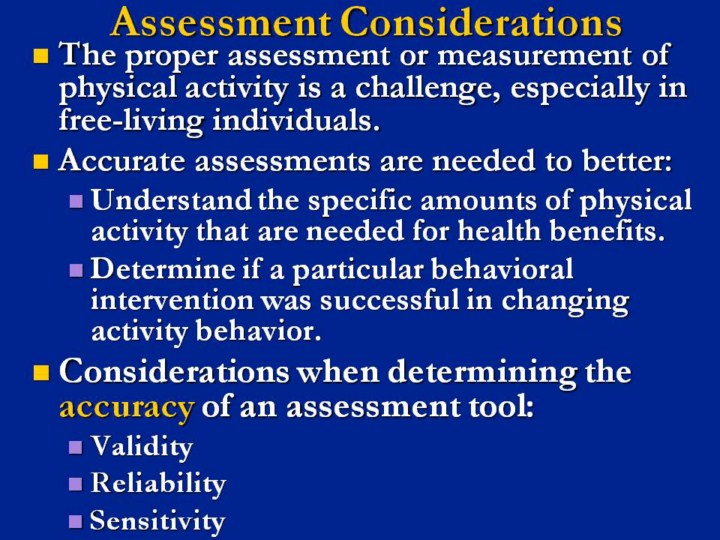| front |1 |2 |3 |4 |5 |6 |7 |8 |9 |10 |11 |12 |13 |14 |15 |16 |17 |18 |19 |20 |21 |22 |23 |24 |25 |26 |27 |28 |29 |30 |31 |32 |33 |34 |35 |review |
 |
The assessment tool must elicit accurate information on the types of physical activities that encompass the greatest proportion of energy expenditure in the study population. If not, the assessment tool will fall short and lead to an inaccurate assessment.
Accuracy is the degree to which an assessment tool is able to measure physical activity and/or exercise. Accuracy is comprised of both validity and reliability.
Validity
is the
degree to which an instrument measures what it sets out to measure.
Reliability
of an
assessment tool relates to its repeatability. Will the results that
were obtained with a particular assessment tool be replicated if the
test is repeated?
Sensitivity
relates to the ability of an assessment tool to accurately measure and
detect change in physical activity patterns.
Recommended Reading: Welk GJ (2002). Physical activity assessments for health-related research. Champaign, IL: Human Kinetics |